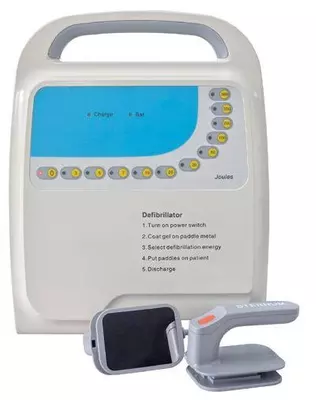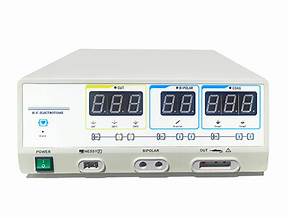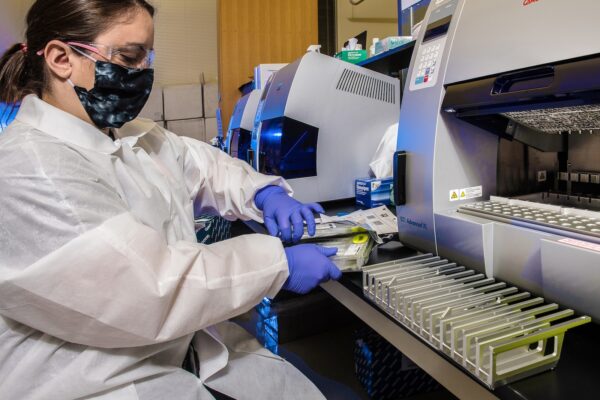The Ultimate Guide to the AM832 Anesthesia Machine: Everything You Need to Know
Unlock the secrets of the AM832 Anesthesia Machine: Discover the must-know features that revolutionize patient care.
 Image courtesy of Antoni Shkraba via Pexels
Image courtesy of Antoni Shkraba via Pexels
Anesthesia machines play a crucial role in medical procedures, ensuring the safe delivery of anesthesia and facilitating patient care. In this comprehensive guide, we will delve into the Anesthesia Machine AM832, exploring its history, key components, safety measures, troubleshooting, and advancements. Whether you are a medical professional or a student aspiring to deepen your knowledge, this article aims to provide you with valuable insights to optimize healthcare practices.
History of the Anesthesia Machine AM832
Anesthesia machines have come a long way since their inception. The AM832 is a revolutionary advancement that offers enhanced functionality and efficiency in anesthesia administration. Developed through years of research and innovation, the AM832 has set new standards in patient care and safety.
Master the AM832 Anesthesia Machine: Your Ultimate Guide!
Stay Informed with Our Newsletter for expert tips and updates on anesthesia machines.
Key Components of the Anesthesia Machine AM832
The AM832 is a complex system with several interconnected components. Understanding each component and its functionality is essential for the safe and effective operation of the machine.
Interface Panel
The interface panel is the control center of the anesthesia machine, allowing the anesthesiologist to monitor and adjust various settings. It includes controls for gas flow rates, ventilator settings, and alarms.
Gas Delivery System
The gas delivery system of the AM832 consists of breathing circuits, oxygen sources, and vaporizers. The breathing circuits channel the anesthetic gas mixture from the machine to the patient and back. Oxygen sources ensure a constant supply of medical-grade oxygen, while vaporizers control the concentration of volatile anesthetic agents.
Ventilator
The ventilator is a critical component of the AM832, facilitating patient ventilation during anesthesia. It delivers oxygen and anesthetic gases to the patient’s lungs, ensuring proper respiration and preventing complications.
Monitoring Devices
Monitoring devices integrated into the AM832 provide vital information about the patient’s condition. Pressure sensors can detect changes in airway pressure, while agent analyzers measure the concentration of anesthetic gases. Alarms notify the anesthesiologist of any potentially dangerous deviations from normal parameters.
Safety Measures and Precautions
Maintaining the safety and functionality of the AM832 is crucial for patient care and operator well-being. Adhering to safety measures and taking necessary precautions is imperative in the effective and responsible use of the machine.
Regular Maintenance and Inspection
The AM832 should undergo routine maintenance and inspection to ensure its proper functioning. Regular inspections help identify any potential issues and prevent equipment malfunctions during critical procedures.
Setup and Calibration Techniques
Proper setup and calibration of the AM832 are essential to minimize risks and achieve accurate measurements. Following manufacturer guidelines and employing established calibration techniques guarantee the accuracy and reliability of readings.
Risks Associated with Gas Leaks and Contamination
Gas leaks and contamination can pose serious risks to patients and operators. Implementing strategies to prevent leaks, such as regularly inspecting and tightening connections, and ensuring gas cylinders are securely fastened, is crucial. Additionally, taking measures to avoid contamination, like using appropriate filters and sterilization techniques, helps maintain a clean and safe anesthesia environment.
Electrical Safety
The AM832 must be properly grounded and electrically safe to protect both patients and operators from electrical hazards. Regularly checking electrical connections, using appropriate power supply sources, and adhering to safety standards are essential precautions to prevent accidents.
Patient and Operator Safety
Ensuring the safety of both the patient and the operator during anesthesia administration is of utmost importance. Following proper guidelines and taking necessary precautions minimize risks and contribute to better patient outcomes.
Guidelines for Patient Safety
Proper positioning, effective monitoring, and tailored anesthesia delivery based on individual patient needs are crucial for patient safety. Diligent monitoring of vital signs, including heart rate, blood pressure, and oxygen saturation, helps detect and prevent complications.
Tips for Operator Safety
Anesthesia machines can pose potential risks to the operator through exposure to anesthetic agent spills or vapor. Wearing appropriate personal protective equipment (PPE), such as gloves and masks, and implementing safe handling techniques minimizes the risk of operator exposure.
Equipment Malfunctions and Accidents
To reduce the likelihood of equipment malfunctions and accidents, it is essential to follow proper operating procedures and regularly inspect the machine. Proper training, clear communication, and maintaining a calm and focused environment contribute to the overall safety of the procedure.
Troubleshooting and Common Issues
Despite regular maintenance and adherence to safety measures, anesthesia machines may encounter issues. Understanding common malfunctions, preemptive troubleshooting, and effective communication with technical support can help mitigate any challenges that may arise.
Identifying and Addressing Common Malfunctions
Common malfunctions in anesthesia machines may include issues with gas flow, ventilator function, or alarm triggers. Learning to identify and troubleshoot these malfunctions promptly helps maintain seamless anesthesia administration.
Troubleshooting Steps for Alarms and Errors
Anesthesia machines are equipped with various alarms designed to alert the anesthesiologist of potential problems. Understanding the meaning behind each alarm and following appropriate troubleshooting steps is crucial in addressing errors swiftly and efficiently.
Communication with Technical Support
In case of persistent malfunctions or technical issues with the AM832, effective communication with technical support and maintenance personnel is essential. Accurate reporting of symptoms and clear communication of observations facilitate timely resolution and minimize downtime.
Advancements and Innovations
The field of anesthesia continues to evolve, and so do the anesthesia machines. Recent innovations have further improved the safety, efficiency, and patient care provided by these devices. The AM832 embraces these advancements, incorporating the latest technologies.
Recent Advancements in Anesthesia Machine Technology
Advancements such as improved gas delivery systems, enhanced monitoring capabilities, and integration of artificial intelligence have strengthened anesthesia machines’ ability to deliver anesthesia safely and tailor anesthetic management to individual patients.
How the AM832 Embraces Innovations
The AM832 incorporates the latest advancements in anesthesia machine technology, offering increased precision, automation, and ease of use. Integration with electronic medical records and seamless data transfer further enhances patient care and streamlines workflow in healthcare settings.
Master the AM832 Anesthesia Machine: Your Ultimate Guide!
Stay Informed with Our Newsletter for expert tips and updates on anesthesia machines.
Conclusion
Anesthesia machines, especially the AM832, are integral to ensuring safe and effective anesthesia administration in medical procedures. By understanding the history, components, safety measures, troubleshooting, and latest advancements associated with anesthesia machines, healthcare professionals can optimize patient care and enhance overall healthcare practices. Continuous learning, adaptation, and adherence to safety protocols are vital in maximizing the benefits offered by anesthesia machines like the AM832.





